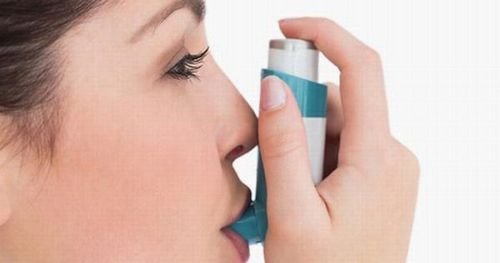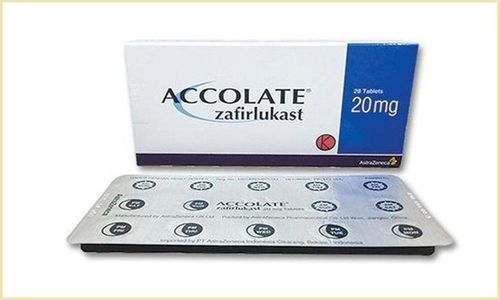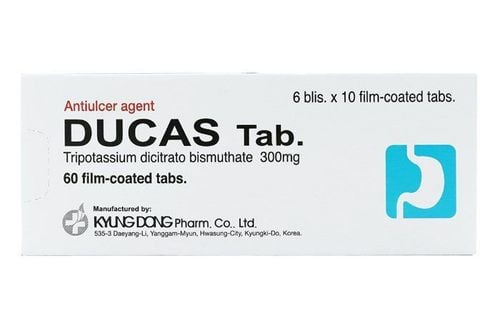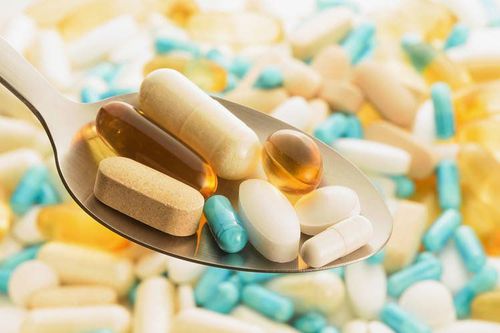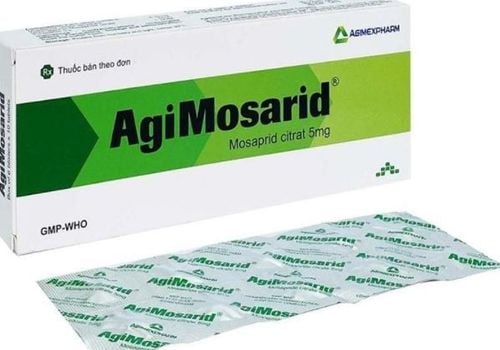This is an automatically translated article.
Fenaflam 25mg contains Diclofenac and is available in tablet form. The drug is indicated for short-term treatment of acute inflammatory conditions such as dysmenorrhea or acute pain in obstetrics and gynecology, maxillofacial,... However, the drug can cause some side effects that are not desired in the course of treatment such as: nausea, diarrhea, epigastric pain, ... Therefore, before using you need to learn carefully the information of the drug and consult a doctor.1. Mechanism of action of the drug Fenaflam 25mg
Fenaflam medicine 25mg contains Diclofenac potassium which has non-steroidal anti-inflammatory effects with anti-inflammatory, analgesic, antipyretic effects. The drug can also strongly inhibit the activity of the enzyme cyclooxygenase. Thus, can significantly reduce the production of prostaglandins, prostacyclin and thromboxane which are known to cause inflammation, pain and fever.Fenaflam 25mg drug with Diclofenac ingredient, when taken into the body, is quickly and completely absorbed. The amount absorbed is similar to that absorbed from the same dose as gastric insoluble tablets. The maximum plasma concentration of Fenaflam 25 mg averages 3.8 mcg/L and the time to reach this concentration is usually 20 to 60 minutes after taking a 50 mg tablet. Drugs taken with food do not affect the amount of drug components absorbed, although the onset of action and the rate of absorption of the drug may be longer than usual.
The amount of Fenaflam 25mg that is absorbed into the body is linearly correlated with the dose used. Therefore, about half of diclofenac may be first metabolized in the liver. The area will then be below the concentration curve with oral administration.
The pharmacokinetics of the drug will not change after multiple consecutive doses. The drug will not accumulate if taken at the correct dose interval.
Fenaflam drug 25mg after entering the body will bind to plasma proteins with about 99.7% mainly albumin. The volume of distribution ranges from 0.12 to 1.17 l/kg. The drug component enters the synovial fluid, where the maximum concentration is reached, and the time to reach it is about 2 to 4 hours after reaching the maximum plasma concentration.
The elimination half-life of the drug from the synovial fluid is usually 3 to 6 hours. Two hours after peak plasma concentrations are reached, concentrations are maintained for about 12 hours. The drug is biotransformed partly by conjugation of the molecule itself, but largely by hydroxylation and methoxylation of one or more radicals, forming phenol metabolites. Most of these metabolites are converted to glucuronic conjugates.
All components of Fenaflam 25mg are eliminated from the body. The terminal plasma half-life is usually 1 to 2 hours. The active metabolites have similar half-lives. Approximately 60% of the administered dose is excreted in the urine as the glucuronic conjugates of the active substance and metabolites. Less than 1% is excreted unchanged and the remainder is excreted as bile metabolites in the feces.
2. Indications and contraindications for using Fenaflam 25mg
What is Fenaflam 25mg? Diclofenac-containing medicines have a rapid onset of action that makes them particularly suitable for the analgesia of headache and acute inflammation. The effect of this compound is the ability to inhibit the biosynthesis of prostaglandins - which play an important role in inflammation, pain and fever.However, in an in vitro study, diclofenac did not decrease cartilage biosynthesis at comparable concentrations. Fenaflam 25mg is indicated for use in the treatment of cases: Short-term treatment of acute painful inflammatory conditions, dysmenorrhea, or acute pain in obstetrics, or acute pain in the teeth, jaw, ears, nose and nose. pharynx, extra-articular rheumatism, or post-traumatic, postoperative pain
But the drug Fenaflam 25mg is also contraindicated in some cases such as:
Patients with a history of allergy and hypersensitivity to the components of the drug. Patients with a history of allergies to diseases such as asthma, rashes, acute rhinitis are used in combination with prostaglandin inhibitors or acetylsalicylic acid drugs. Patients with advanced gastric or duodenal ulcers or a history of gastrointestinal bleeding. Patients with bleeding or congestive heart failure, renal failure or hypovolemia or hypovolemia. Women who are pregnant should not use NSAIDs in the last 3 months of pregnancy. Patients with congestive heart failure from grade 2 to level 4 according to the functional classification of heart failure or patients with ischemic status, peripheral artery disease,....
3. Dosage and how to use Fenaflam 25mg
Fenaflam 25mg is used in oral form. To minimize the risk of adverse events, the lowest daily dose should be used so that an effect can be discerned in the shortest possible time. Dosage for adults is from 1 to 2 tablets and used from 2 to 3 times a day. In case of primary dysmenorrhea, Fenaflam 25mg should be used before meals or as directed by the treating doctor.The dosage of Fenaflam 25mg above is for reference only. Therefore, if you use the drug to improve your health, you need to learn carefully and consult a doctor.
If you forget to take your medicine, use the missed dose as soon as you remember. However, if the missed dose of Fenaflam 25mg is close to your next dose, skip the missed dose and take the next dose. You should note that you should not double the dose of Fenaflam 25mg, because this can cause bad symptoms affecting health.
In case of drug overdose, stop using Fenaflam 25mg and see a doctor for timely support.
4. Unwanted side effects when using Fenaflam 25mg
Fenaflam 25mg medicine can cause unwanted side effects during treatment. Some common effects when using the drug include: Digestive related such as nausea, vomiting, diarrhea, constipation, epigastric pain. However, the drug can also appear some rare side effects such as: Ulcers or gastrointestinal bleeding with long-term treatment, blood disorders that can cause leukopenia, thrombocytopenia , anemia , headache , insomnia , excitability , or may appear urticaria , edema . Some people experience asthma, bronchospasm, or acute renal failure, interstitial nephritis, hematuria,...Or some are at risk of cardiovascular thrombosis: Clinical trials and Pharmacological epidemiology has demonstrated that the use of Fenaflam 25 mg is associated with an increased risk of cardiovascular thrombotic events, especially with high doses and prolonged use.
Some notes when using Fenaflam 25mg:
People with a history of ulceration, bleeding or perforation of the gastrointestinal tract, or kidney failure, liver failure, systemic lupus erythematosus,... need to periodically monitor their function. liver and kidney function when treated with Fenaflam 25mg. Non-aspirin non-steroidal anti-inflammatory drugs, often administered systemically, may increase the risk of cardiovascular thrombotic events including myocardial infarction or stroke, and potentially death. Interactions of drugs Fenaflam 25mg should not be used together with non-steroidal anti-inflammatory drugs, salicylate derivatives, because they may increase the risk of ulceration and gastrointestinal bleeding. Or should not be used with anticoagulants because of the increased risk of bleeding. Concomitant use with quinolone antibiotics may increase central nervous system side effects leading to convulsions. It should be noted that when combining Fenaflam 25mg with other drugs such as Cimetidine, it can reduce serum copper diclofenac but not the effect of the drug - protect the stomach, duodenum and avoid the side effects of the drug. . Or drugs with Probenecid can double the concentration of Diclofenac and have a good clinical effect in people with joint disease. However, poisoning can occur if the person has impaired kidney function.
Please dial HOTLINE for more information or register for an appointment HERE. Download MyVinmec app to make appointments faster and to manage your bookings easily.




